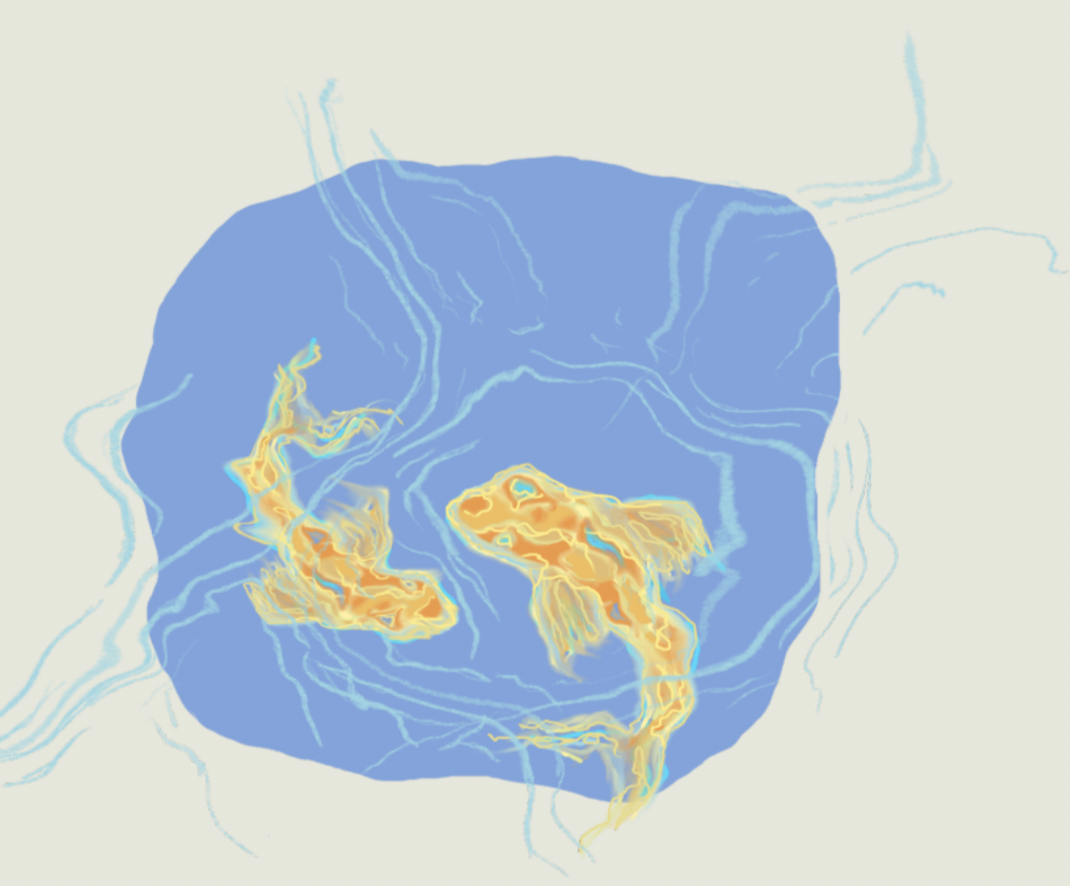Historically, olfactory perception was understood as the binding of atoms to a receptor. However, some claim this process to be driven by waves. Photo credit: Emma Little, The Oxford Scientist
A creature’s experience of life is brought about by the biological pathways that allow it to perceive and be conscious. Although sensory experiences, like a smell that sparks nostalgic memories of a favourite childhood meal, differ between individuals, perceptions are threads of familiarity that weave us all together. And yet, quantum mechanical principles are disrupting what was once taken for granted about perception. They have reopened the debate on the origins of olfaction (smell), vision, and even abstract experiences like consciousness.
The accepted truth (and where it falls short)
Accepted models of perception, such as smell, tend to describe physical interactions between molecules. Human olfaction has historically been attributed to the “docking theory”, where clusters of atoms, called functional groups, bind to a complementary receptor. This triggers the neurological pathways that identify what is being smelt.
…perception is likely more than simply the binding of molecules to receptors. This is where the additional depth that quantum mechanics could provide comes in.
Such models are, however, fallible. For example, vanillin and isovanillin are molecules with near-opposite scents: vanillin smells of sweet vanilla while isovanillin smells of asphalt. Despite this, they are almost chemically identical, with only two functional groups positionally swapped between them. This immediately suggests that perception is likely more than simply the binding of molecules to receptors. This is where the additional depth that quantum mechanics could provide comes in.
Scents come in waves
Quantum mechanics describes the nature of everything at the scale of atomic and subatomic particles (e.g., protons and neutrons). In the quantum world, molecules can experience oscillations (waves) when they are externally triggered, for example by a magnetic field. Theories such as the “Vibrational Theory of Olfaction” (VTO) suggest that these oscillations may play a role in how we perceive, especially in how we smell. Fortunately, one particular sniff test allows us to understand this process more.
Theories such as the “Vibrational Theory of Olfaction” (VTO) suggest that these [molecule] oscillations may play a role in how we perceive…
Deuteration is a commonly used physical, chemical, and biochemical experimental method, where 1H hydrogen atoms are replaced with 2H hydrogen atoms (both have nuclei with one proton but 2H nuclei have an extra neutron). This replacement affects the way a molecule oscillates, known as the “vibrational mode” of the molecule. A 2013 study by Simon Gane and colleagues experimentally deuterated several molecules from a class known as “musks” by exposing them to “heavy water” (deuterium oxide). Participants then described the scents of the 1H and 2H musks to assess how vibrational mode affects our sense of smell.
Amazingly, participants could distinguish between musks and their deuterated counterparts. They described the 1H musks as smelling ‘animalic, sweet, and oily’, while they noticed an additional ‘burnt’ component to the deuterated musks, supporting the VTO.
Other researchers think that the application of quantum mechanical principles to human perception smells fishy. For example, a study by Drimlyi found that, though deutration can be smelt, the extent of deuteration is unlikely to be detectable. This suggests that it may be unique impurities in the deuterated samples that alter olfactory profiles, rather than changes in vibrational modes resulting from deutration. This weakens arguments supporting the VTO.
An undefined resolution
The influence of quantum mechanics on the way we perceive is still unclear. These theories, and more obscure principles that may ‘lurk beneath the quantum realm’ (as described in the New Scientist in April this year) are sure to be explored further in the future.
The possibility that perception can distinguish our surroundings at a deeper, quantum mechanical level is intriguing. It gives rise to the possibility of “artificial perception”, whereby technology could evaluate cues to mimic human perception, such as in computer vision or machine hearing. Though clarifying the quantum principles behind perception does not change how we perceive, it may shape how we replicate the human experience using technology, impacting many research fields and individuals.
So, next time you are walking down a freshly tarmacked road enjoying a vanilla ice cream, appreciate what quantum mechanics may have evolved to allow you to do. Without our noses being able to sense miniscule molecular oscillations, the sweet treats we so often love would smell far less appetising.





